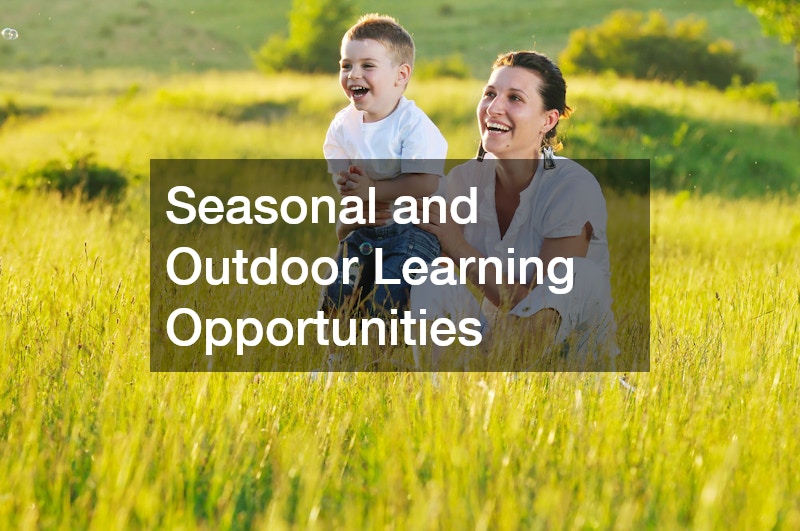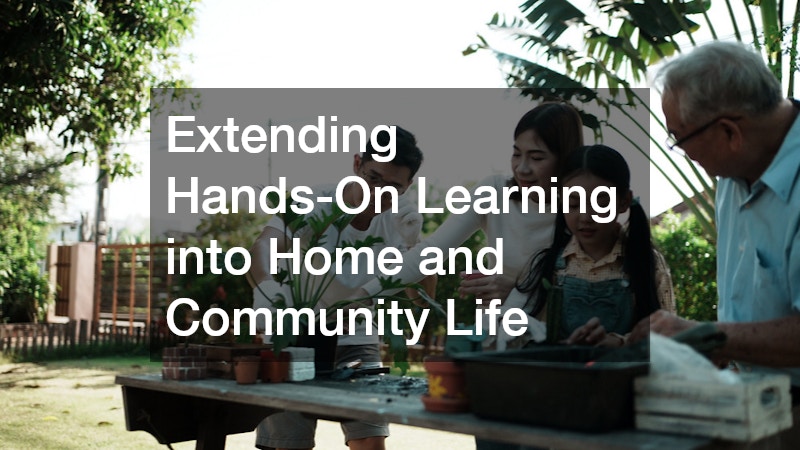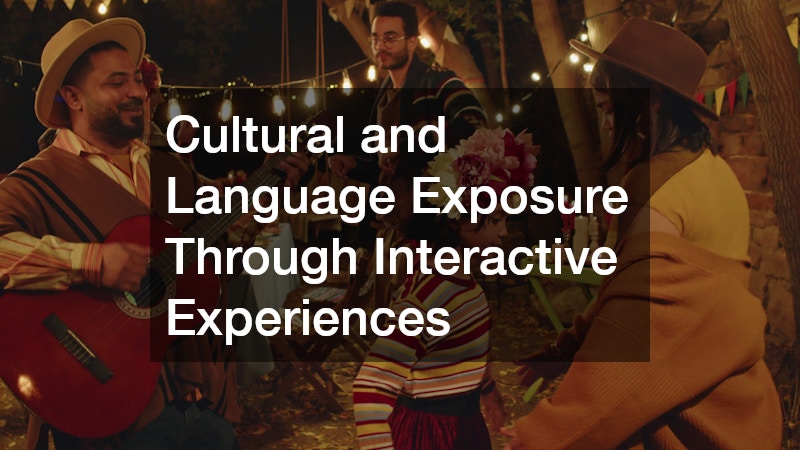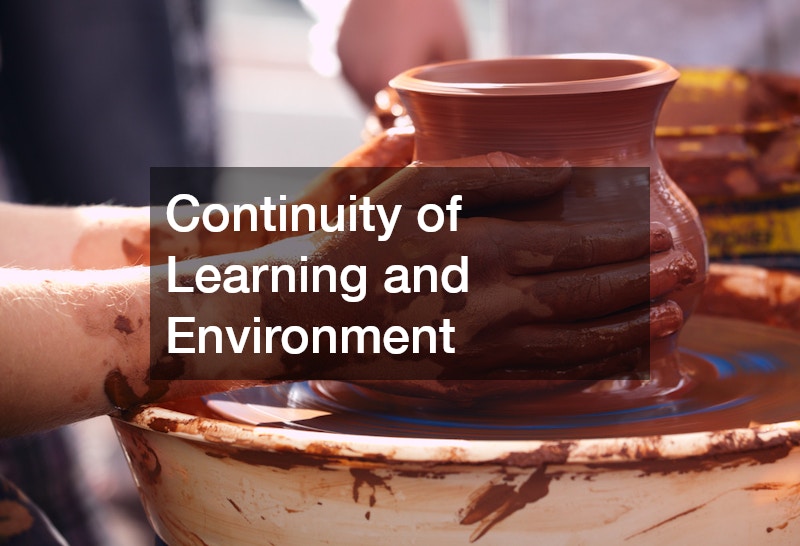Why Hands-On Exploration Is Key in Early Childhood Learning
Early childhood is a period defined by curiosity, movement, sensory discovery, and continuous interaction with the world. At this stage, learning does not happen only through listening or watching; it unfolds through doing. Hands-on exploration enables children to engage with textures, sounds, shapes, actions, and relationships in real time, forming foundational neural pathways that support how they think, communicate, and understand their surroundings. When environments are designed to encourage self-directed discovery, children begin to grasp concepts intuitively before they encounter them in formal lessons later in life. The process of touching, experimenting, and observing sparks intrinsic motivation and reinforces both confidence and cognitive development. This approach supports early childhood learning by aligning with how young brains naturally grow—through active experience rather than passive reception. It also nurtures creativity, emotional resilience, and problem-solving skills that benefit children socially and academically as they mature. When adults, caregivers, and educators intentionally create environments full of opportunities for experimentation, children develop skills that support long-term growth, adaptability, and a positive relationship with knowledge itself.
Sensory Play and Independent Discovery
Young children learn primarily through their senses. When they physically explore materials, spaces, and objects, they begin forming associations that allow abstract understanding to emerge later. Sensory play involves texture, color, sound, movement, and spatial awareness. It encourages children to make predictions and test outcomes, laying the groundwork for reasoning. At a Montessori daycare, learning spaces are intentionally structured around hands-on activities that invite children to use their senses to investigate and self-correct. This environment supports independence, as children select materials that interest them and learn through repetition, reflection, and purposeful engagement.
This approach also supports emotional regulation. Sensory activities, such as pouring water, shaping sand, or sorting natural objects, help children create patterns and practice patience. These experiences reduce overwhelm because they provide children with a clear focus and involve both physical and cognitive participation. Additionally, sensory exploration builds fine motor skills, which become essential when children begin writing, buttoning clothes, or handling tools. It also supports gross motor skills by encouraging climbing, balancing, stacking, and movement-based play.
Hands-on sensory learning also nurtures confidence. When children discover something independently—whether a way to build a tower that doesn’t fall or a new method of mixing colors—they develop trust in their own thinking. This self-assurance contributes directly to the strength of early childhood learning because children who believe their ideas matter become more willing to explore new concepts and solve unfamiliar problems. Sensory engagement is the gateway to all forms of learning that follow, building a strong neurological and emotional foundation for lifelong growth.
Cultural and Language Exposure Through Interactive Experiences
Language development unfolds through interaction. Children learn the structure, meaning, and rhythm of communication by listening, speaking, singing, storytelling, and engaging with others. Environments that encourage hands-on collaboration support language development more effectively than isolated drills or rote memorization practices. In a multi-language preschool in Singapore, children often engage in structured and unstructured play environments where language exposure happens naturally. Each activity becomes an opportunity to communicate, negotiate roles, describe actions, and share discoveries.
When children move, build, experiment, and observe, they have authentic reasons to use language. If they are constructing a bridge or navigating a shared task, they need to express needs, ideas, and instructions. These real-world contexts make vocabulary meaningful, and children learn not just words but the social purpose of communication. This type of language building also supports children from multilingual households by validating their cultural and linguistic identities, reducing the pressure to abandon one language for another.
Hands-on exploration nurtures narrative thinking: the ability to explain sequences, describe cause and effect, and reflect on experiences. As children create stories about their play scenarios, they strengthen memory, attention, and linguistic creativity. This contributes positively to early childhood learning by linking physical experience with conceptual understanding. When children are encouraged to express what they notice, question, or imagine, they develop strong communication skills that will support academic writing, social interaction, and emotional expression throughout adolescence and adulthood.
Social-Emotional Development Through Structured Play
Children thrive when learning is reinforced across multiple environments. While primary caregivers and early educators play essential roles, children also benefit from familiar community spaces that support consistency and meaningful relationships. Programs such as local after school care provide structured settings where hands-on exploration continues beyond the standard classroom day. In these environments, children often participate in projects, group games, outdoor play, and creative activities that deepen the learning that began earlier.
When learning continues across different parts of a child’s daily routine, they have more opportunities to internalize concepts and apply them in varied contexts. Consistency does not mean repetition; it means exposure to familiar frameworks that evolve with children’s interests. For instance, a child who experiments with building blocks in the morning may later work on a collaborative construction project with peers, learning how cooperation enhances outcomes.
Programs that extend learning into the community help children understand that knowledge is not confined to a single space or time. They also support social development by offering opportunities to form friendships, solve conflicts, and adapt to group dynamics. These environments play a pivotal role in early childhood learning by reinforcing emotional intelligence, empathy, and practical problem-solving skills that influence how children approach challenges as they grow. When children experience consistent support, they develop a sense of safety and stability that allows curiosity to flourish.

Seasonal and Outdoor Learning Opportunities
Outdoor exploration exposes children to changing environments, natural elements, and seasonal cycles that cannot be replicated indoors. Activities such as digging in the soil, observing insects, collecting leaves, or watching weather patterns promote scientific thinking long before children encounter scientific terminology. A summer camp for kids often emphasizes hands-on outdoor activities that encourage children to build shelters, navigate trails, observe wildlife, and experiment with natural materials. These immersive experiences provide rich cognitive benefits and strengthen awareness of how ecosystems function.
Nature-based learning supports physical development by encouraging active movement—running, climbing, balancing, and lifting. It promotes sensory awareness through exposure to varied textures, temperatures, sounds, and lighting conditions. It also nurtures creativity by offering open-ended materials that require imagination rather than a predefined purpose. A stick, a pile of stones, or a fallen branch becomes a tool for invention.
Outdoor exploration contributes meaningfully to early childhood learning because it encourages children to understand themselves as part of a larger natural world. It fosters care, responsibility, and appreciation for living things. When children interact with nature regularly, they develop patience, observation skills, and resilience. Outdoor settings encourage adaptive thinking, as natural environments are unpredictable and constantly changing. Children who learn to navigate these challenges develop flexible problem-solving strategies that support academic readiness and personal growth.
Inquiry and Problem-Solving Through Academically Guided Exploration
Scientific thinking begins long before formal science education. When children experiment with cause and effect, test predictions, and explore patterns, they are already engaging in the foundations of inquiry. A stem private school often structures learning around hands-on experimentation, where children investigate physical materials, observe outcomes, and refine their ideas through repeated trials. This approach supports the development of logical reasoning and analytical thinking.
Experimentation also teaches children to tolerate uncertainty. When they test an idea and it doesn’t work, they learn perseverance and adaptability. These skills contribute to early childhood learning by building a mindset that views challenges as opportunities. When children take risks in a supportive environment, they build resilience that is crucial for complex problem-solving later in life.
Hands-on inquiry also strengthens memory and conceptual understanding. Children remember concepts better when they experience them physically. For example, understanding volume by pouring water between containers or learning balance by building weighted structures allows children to internalize concepts more deeply than through explanation alone.
Scientific exploration encourages curiosity, which is one of the strongest intrinsic motivators for lifelong learning. When children are encouraged to ask questions and seek answers, they develop intellectual confidence that influences how they approach new subjects and unfamiliar situations in the future.
Continuity of Learning and Environment
As children grow, learning environments gradually become more structured. While early years focus on exploration, play, and sensory engagement, academic concepts become more formal as children approach school-age readiness. However, hands-on learning continues to be essential during this transition. Many private elementary schools integrate experience-based activities into their instructional approach. Projects, manipulatives, cooperative tasks, and creative lessons allow children to maintain engagement while adapting to academic expectations.
This transition period is critical for developing foundational academic skills such as reading, writing, and mathematics. Children who have had meaningful hands-on learning experiences tend to understand abstract concepts more readily because they can relate them to real-world experiences. For instance, a child who has sorted objects by size and shape has already formed cognitive patterns that support mathematical thinking. A child who has listened to and told stories during play has developed narrative understanding that supports reading comprehension.
This stage of early childhood learning also emphasizes social development. Group activities allow children to negotiate rules, share responsibilities, and practice empathy. Hands-on projects create natural opportunities for collaboration, which prepares children for teamwork and communication in later grades. A strong transition to structured academics occurs when educators preserve curiosity, encourage exploration, and support problem-solving rather than focusing solely on memorization or compliance. When children feel empowered to think independently, they approach learning with confidence and enthusiasm.
Social and Values-Based Foundations
Emotional, social, and moral development are interconnected with academic and cognitive growth. Children learn how to relate to others, express feelings, and make ethical decisions through experiences, not just instruction. Community environments such as a church for young families often provide spaces where children can play, participate in group activities, and learn shared values through hands-on interaction and stories. These settings help children develop a sense of belonging, which is crucial for emotional stability.
Hands-on exploration in social settings encourages children to practice cooperation, patience, and kindness. For example, when children work together on a shared task, they learn to communicate needs and recognize the needs of others. They begin to understand fairness, empathy, and responsibility. This type of emotional learning supports early childhood learning by shaping how children form relationships and respond to challenges.
Values-based environments also provide opportunities for children to connect experiences with meaning. When children participate in rituals, storytelling, or community service activities, they learn how individual actions contribute to the well-being of others. These experiences help children develop a moral compass that guides behavior throughout life.
Social exploration does not require formal lessons; it grows from interaction, observation, and participation. When educators and caregivers model constructive communication and inclusivity, children learn through imitation and practice. The emotional and social skills developed through these experiences support every future stage of learning, work, and interpersonal connection.

Extending Hands-On Learning into Home and Community Life
Learning does not occur only in schools or designated activity rooms. Everyday environments can be designed to support discovery and curiosity. For example, homes equipped with smart home systems can offer interactive opportunities for children to engage with technology in ways that encourage reasoning and prediction. Adjusting lights, monitoring temperature changes, or observing how devices communicate can spark conversations about patterns, sequences, and cause and effect.
Outdoor spaces also support hands-on exploration. A garden center offers an environment where children can interact directly with soil, plants, and natural materials. Planting seeds, watering them, and observing growth cycles teach patience, responsibility, and scientific observation. These activities connect children to natural rhythms and environmental awareness.
Additionally, community spaces such as local donation centers offer hands-on experiences that teach empathy, responsibility, and social contribution. When children participate in selecting items to give or helping organize community drives, they learn the value of care and cooperation. These experiences support emotional intelligence and civic awareness.
By integrating learning into daily routines, caregivers and educators reinforce the idea that curiosity and discovery are lifelong practices. This approach strengthens early childhood learning by creating a world where every moment is an opportunity to understand, explore, and grow.
Hands-on exploration strengthens cognitive, emotional, social, and physical development by aligning learning experiences with how children naturally grow. When children are encouraged to interact directly with materials, environments, and relationships, they develop confidence, creativity, and resilience. Whether learning takes place in formal educational settings or through everyday experiences in the community, the opportunity to explore actively supports early childhood learning in a meaningful and lasting way.







